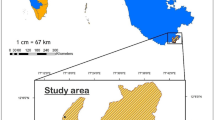Abstract
Wildlife managers, researchers and the general public have traditionally been demanding information on factors concerning the probability of risky encounters between predators and people, as well as how to react in those situations. This information is crucial to reduce the number of predator attacks, which in absolute terms have increased in the last decades. Here, we focus on the role of carnivore species and sex, as well as victim-related factors (i.e. gender, activities, party composition), as determinants of carnivore attacks on humans. Using a dataset on attacks by grizzlies (Ursus arctos horribilis), black bears (Ursus americanus), cougars (Puma concolor), wolves (Canis lupus) and coyotes (Canis latrans) in North America during the last five decades, we found that (1) male black bears were involved in attacks more frequently than females; (2) attacks by coyotes, cougars and wolves prevalently caused injuries, whereas cases of death were more frequent during grizzly and black bear attacks; and (3) people in a party were less vulnerable to an attack than a person alone. We identified risky situations and behaviours that should be avoided in areas where people and large carnivore share the landscape.

Similar content being viewed by others
References
Beier P (1991) Cougar attacks on humans in the United States and Canada. Wildl Soc Bull (1973-2006) 19(4):403–412
Burnham KP, Anderson DR (2002) Model selection and multimodel inference: a practical information-theoretic approach. Springer-Verlag, Berlin
Cain S, Frey K, Tyers D, Haroldson M, Servheen C, DeBolt B, et al (2014) Fatality of Mr Adam Thomas Stewart from a bear attack in Cub Creek on the Bridger-Teton National Forest on September 4, 2014. Board of Review Recommendation Report, unpublished report
Carbyn LN (1989) Coyote attacks on children in western North America. Wildl Soc Bull (1973-2006) 17(4):444–446
Chapron G, Kaczensky P, Linnell JDC, von Arx M, Huber M et al (2015) Recovery of large carnivores in Europe’s modern human-dominated landscapes. Science 346:1517–1519
Conover MR (2008) Why are so many people attacked by predators? Hum Wildl Confl 2:139–140
Ferretti F, Jorgensen S, Chapple TK, De Leo G, Micheli F (2015) Reconciling predator conservation with public safety. Front Ecol Environ 13:412–417
Frey K, Tyers D, Haroldson M, Servheen C, Bruscino M, Gunther K et al (2012) Fatality of Mr John L Wallace from a bear attack on the Mary Mountain Trail in Yellowstone National park on August 25, 2011. Board of Review Recommendation Report
Fukuda Y, Manolis C, Saalfeld K, Zuur A (2015) Dead or alive? Factors affecting the survival of victims during attacks by saltwater crocodiles (Crocodylus porosus) in Australia. PLoS One 10:e0126778
Garneau DE, Boudreau T, Keech M, Post E (2008) Habitat use by black bears in relationship to conspecifics and competitors. Mamm Biol 73:48–57
Herrero S, Higgins A (1999) Human injuries inflicted by bears in British Columbia: 1960–97. Ursus 11:209–218
Herrero S, Higgins A (2003) Human injuries inflicted by bears in Alberta: 1960–98. Ursus 14:44–54
Herrero S, Higgins A, Cardoza JE, Hajduk LI, Smith TS (2011) Fatal attacks by American black bear on people: 1900–2009. J Wildl Manag 75:596–603
Löe J, Röskaft E (2004) Large carnivores and human safety: a review. AMBIO J Hum Environ 33:283–288
Mattson D, Logan K, Sweanor L (2011) Factors governing risk of cougar attacks on humans. Hum Wildl Interact J 5:135–158
Penteriani V, Delgado MM, Pinchera F, Naves J, Fernández-Gil A, Kojola I et al (2016) Human behaviour can trigger large carnivore attacks in developed countries. Sci Rep 6:20552. https://doi.org/10.1038/srep20552
R Development Core Team (2013) R: A language and environment for statistical computing. R Foundation for Statistical Computing
Ripple WJ, Estes JA, Beschta RL, Wilmers CC, Ritchie EG, Hebblewhite M et al (2014) Status and ecological effects of the world’s largest carnivores. Science 343:1241484
Stringham SF (2013) Managing risk from bears and other potentially lethal wildlife: predictability, accountability, and liability. Hum Wildl Interact 7:5–9
Teichman KJ, Cristescu B, Nielsen SE (2013) Does sex matter? Temporal and spatial patterns of cougar-human conflict in British Columbia. PLoS One 8(9):e74663
Timm RM & Baker RO (2007) A history of urban coyote problems. Wildlife Damage Management Conferences--Proceedings (p 76)
Treves A, Naughton-Treves L (1999) Risk and opportunity for humans coexisting with large carnivores. J Hum Evol 36:275–282
White LA, Gehrt SD (2009) Coyote attacks on humans in the United States and Canada. Hum Dimens Wildl 14:419–432
Wilmot K, Frey K, Tyers D, Haroldson M, van Manen F, Servheen C, et al (2016) Fatality of Mr Lance Crosby from a bear attack on Elephant Black Mountain in Yellowstone National park on August 6, 2015. Board of Review Recommendation Report
Acknowledgements
We thank S. Herrero for his helpful comments on the first draft of the manuscript.
Funding
PJGG and JMF were funded by a Portuguese FCT grant (IF/00728/2013). MMD was supported by a Spanish ‘Ramón y Cajal’ grant (RYC-2014-16263). JVLB was supported by the Spanish Ministry of Economy and Competitiveness (JCI-2012-13066).
Author information
Authors and Affiliations
Corresponding authors
Electronic supplementary material
Table S1
(DOCX 15 kb)
Rights and permissions
About this article
Cite this article
Garrote, P.J., Delgado, M.d.M., López-Bao, J.V. et al. Individual attributes and party affect large carnivore attacks on humans. Eur J Wildl Res 63, 80 (2017). https://doi.org/10.1007/s10344-017-1142-1
Received:
Accepted:
Published:
DOI: https://doi.org/10.1007/s10344-017-1142-1




